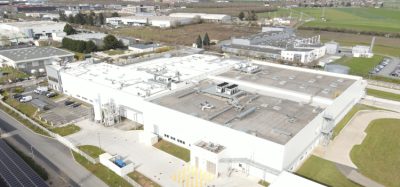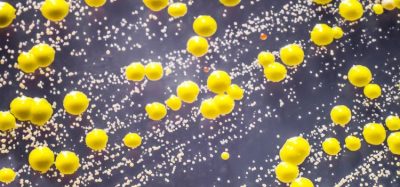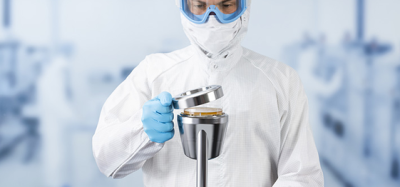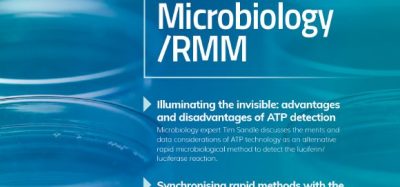The challenges of riskbased environmental monitoring in sterile product filling
Completing risk assessments is an inherent part of good manufacturing practice (GMP) and risk-based environmental control and monitoring (EM) in sterile product filling within isolators and restricted access barrier systems (RABS). This article considers the challenges the pharmaceutical industry faces in characterising conventional risk assessments like failure modes and effects analysis (FMEA) for determination of risk-based EM programs, considering aspects of the filling machine, barrier separation technology, surrounding cleanroom environment, monitoring methods/systems and process operations. The requirement for process monitoring for the manufacture of sterile medicinal products is starting to be discussed in the revision of EU GMP Annex 1, so as to bring together all EM data and hence consider the process holistically.
Overview of the challenges
Risk assessment models like FMEA and those that use risk priority numbers to set scores are generic and need characterisation to set rationale for outcomes. In filling sterile products, this requires the pharmaceutical/biopharmaceutical company, filling machine vendor, isolator/RABS vendor and EM equipment vendor to collaborate to set the rationale, apply risk assessments and develop risk-based EM technical and program solutions. Each party may have a very different understanding of EM risk assessments and responses to outcomes.
In filling lines, EM sampling tools and systems require a comprehensive technical integration into the process machine bed plate and barrier system. Therefore, if the exercise is not completed at the appropriate project stage (i.e., before mock-up study), the sampling may be compromised, since setting sampling locations later on site is technically challenging, impacting qualification and the overall project timeline together with generating additional costs.
Risk assessment methodology
In principle, environmental classification does not need to be riskassessed since there are requirements to meet specified environmental conditions set out in EU GMP Annex 1 and the US Food and Drug Administration’s guide to industry for sterile products produced by aseptic processing. However, in practice, we classify with sampling at risk-based locations so risk assessments are required to define these locations ahead of any classification studies.
ISO 14644-11 standards are referenced in EU GMP and require that total particulate levels at reference particle sizes for different area grade classifications of cleanliness are not exceeded. ISO 14698-12 is not directly referenced in EU GMP although this ISO standard is drawn attention to in ISO 14644 and relates to bio-contamination control in controlled environments considering surface and airborne bio-contamination. ISO standards are generic to all industries, so adapting them to pharmaceutical requirements may be necessary. Previously, the number of sample locations for total particle monitoring was considered by calculation of square root of the area, but this is no longer valid with the revision of ISO 14644-1, which defines sample numbers from a set table per referenced area. Consideration is also given to risk-based sample locations, statistical methods of setting/adjusting sample locations and sample results analysis.
In pharmaceutical applications, the consideration of risk-based locations is of paramount importance and any approach to use a statistical model to move sample locations around inside a set reference grid, to better profile the contamination levels in set areas over time, is not considered fully compatible with GMP requirements. Risk-based sample locations are defined by risk assessment in GMP; these locations are routinely monitored with resulting data trended over time to provide a more complete picture of the contamination control status. Isolator/RABS Grade A process environments are inherently clean so the entry or generation of contamination into these clean zones is the target for monitoring providing detection the environmental control state has been compromised. Cleanliness classes defined in ISO 14644-1, and ISO class 5 for the filling process zone, only relate to total particulate and not microbiological levels or limits. For total particulate counts the term ‘non-viable’ is often used but the total count will include microbe carrying particles (MCPs). As MCPs are not differentiated in optical particle counting measurement techniques, all particle count data is characterised as non-viable to differentiate between other direct microbial sampling methods like active air and settle plates that use a growth media to recover bio-contamination from the environment (airborne and surfaces). In growth-based techniques, exposed media used to capture microbiological contamination are incubated at set temperature(s) to enable recovered microbial contamination to proliferate into visual colonies that can be counted and reported as colony-forming units (CFUs).
The EU GMP Annex 1 Grades A, B, C and D combine the requirements (not to exceed levels) for both total particles at reference particle sizes of 0.5 micron and 5.0 micron, and for microbiological levels (CFUs). The FDA’s guidance for aseptic processing also requires that microbiological levels are not exceeded. However, as compared with European Union GMP, the FDA guidance only relates to a reference particle size of 0.5 micron (measured as total particles of size 0.5 micron and above). In the discussions on the revision of the EU Annex, it has been made clear that both 0.5 and 5.0 micron particle sizes will remain as reference particle sizes. Also under discussion in the Annex 1 revision is that the linkage of ISO 14644 to EU GMPs may be under different terms because the European Medicines Agency has no control over the ISO standard revision process and so increasing non-alignment with EU-GMP is possible as this generic (all industry) ISO standard develops.
Rationale for risk assessment
In principle, we do not directly risk assess EM sample locations; we in fact risk-assess possible sources and routes of contamination in sterile product filling to understand if contamination risks are present in the controlled environment during processing. We then define monitoring locations with positions on the potential contamination routes (surface-to-surface transmission) or pathways (airborne transfer path) so there is likely detection of a contamination event that would potentially put critical process points/sterile product at risk. Monitoring data, real-time/continuous total particle counts or retrospective growth-based CFU counts can then be used to facilitate appropriate responses, which typically include a root cause investigation into the deviation from the control state and possible impact assessment.
Considering airborne contamination transfer and surface-to-surface bio-contamination transfer mechanisms required EM can be defined by sample type, sample location and frequency, to establish methods of detection if the controlled state deviates from specified levels. MCPs in cleanrooms that are thought to deposit from operations personnel are considered to be in the range of eight-to-12 microns and comprise a combination of a carrier such as a skin flake, and microorganisms. Cleanroom/barrier airflow can generate smaller particle sizes and these may be deposited with airflow direction changes or during process operations (e.g., into a product container or sterile product).
The risk to sterile product contamination is a function of the mechanism of transfer and deposition rates, and is impacted by source type and particle size. Particle movement analysis studies using the limitational risk (LR) method3, whereby a small smoke ‘gun’ or stick generates particles (without high velocity so influenced by airflow movement) and a particle counter is used to track movements, may be useful to fully characterise small particle contamination transfer pathway ways; from the potential source to the point of risk or to monitoring points.
Research into particle movements, deposition mechanisms and contamination transfer rates are now starting to be considered to support FMEA risk assessments. As all the main mechanisms, functions and characteristics of particle transfer and deposition can be mathematically modelled by formulae4, the interaction between the control measures can be assessed for impact on contamination rates and risk ratings. Such a mathematical model can be used to assess the impact on the level of risk control of adding or removing the control measure. Specified technical control measures should form a process design and deliver an environmental control state for sterile product filling under controlled conditions with a low (reduced or eliminated) risk of contamination; this approach follows quality-by-design (QbD) principles.
Deviations in technical control measures and in organisational control measures, including standard operating procedures (SOPs), for operator interventions increase the risk of sterile product contamination and hence require monitoring so that deviations can be detected, acted on, recorded as out of specification and documented/trended for review. A risk assessment covering EM is only possible if there is a full understanding of the process and applied control measures that form the process design and operating procedures.
The first part of the risk assessment needs to review the technical control measures in place, assessing the risk and impact (criticality) of deviation in control measures on sterile product filling. It is not possible or acceptable to try and justify a poor process with monitoring results that are repeated until a ‘pass’ condition is reached, since this would not be considered a robust or safe process. Good process design is a vital starting position for EM risk assessment and should mitigate risks from human error, e.g., greater use of automation or technical controls such as interlocks.
In the first stage, risk assessment models like hazard analysis of critical control points (HACCP) may be more suitable than FMEA for technical control measures. Guidance on risk assessments covering QRM is provided in the ICH Q9 and GMP Annex 20. The outcome of the first stage of risk assessment verifies the technical control measures required, without operator intervention, to deliver the required environmental control conditions and the necessary detection and actions (alarm, response and reporting) in deviation are completed to assure the environment remains under control and sterile products are not put at risk.
In the second stage, all operator interventions are risk-assessed and EM is used to monitor potential contamination. Interventions in a controlled barrier environment are considered as either inherent or corrective. Deviation in the control state as a result of interventions can be risk assessed by an FMEA and this article further considers such application. Inherent interventions may be in the initial set-up before product is filled or during processing to feed in container closures (stoppers or plugs). Corrective interventions are typically under barrier separation conditions, via barrier gloves to correct a fallen container, etc.
Open barrier door corrective interventions during aseptic filling process operations have much higher risks of contamination transfer and are generally not considered best practice. If, however, there is an unavoidable process requirement for an open RABS barrier door corrective intervention during filling operations, then there should be additional technical control measures such as an overhead down-flow HEPA filtration over the barrier access door. Such interventions, not considered best practice, would require risk-based rationale and justification together with process simulation trials (PST) and qualification in media fill studies that the potential for contamination is detectable, managed and monitored for deviation from expected/specified control conditions.
As an alternative to RABS, the closed barriers of isolators remain closed throughout all filling steps with controlled/closed transfers of all materials that enter and exit the barrier around the critical process zone. Open system aerodynamic protection is limited in isolators to barrier ‘mouse holes’ where, for example, filled product may exit the filling barrier for further processing, e.g., capping. From the risk assessments, an intervention list should be developed, and here the use of Ishikawa (fish bone) diagrams can play a role in defining interventions considering the inherent interventions at set-up with barrier doors open, and then with the barrier doors closed the inherent and corrective interventions.
A good practice to differentiate open barrier and closed barrier door interventions is to use colour coding on the diagram of the intervention steps: red for open barrier doors and green for closed doors. The example in Figure 1 (page 00) shows vial filling in an open design RABS line.
Risk zones in risk assessments
It is good practice to segregate the filling line into zones that have a primary process function and related interventions so that the FMEA risk analysis can be targeted zone by zone in a manageable way. To facilitate an FMEA analysis, the zones are best recorded diagrammatically (see example in Figure 2; page 00). Starting with a listing of the control measures (see Table 1; page 00), which form the basis of process design for environmental control, the risk zone by zone can then be processed through an FMEA, considering interventions and possible failure to prevent product contamination.
Sterile product filling process design and operations take place under low risk conditions. For sterile product filling FMEA, it has been found that the risk ratings are better categorised as: low, medium-low, medium-high, and high, to provide better characterisation of outcomes considering the overall subjectivity of risk assessments. Any outcome of a low risk and medium-low risk requires procedural control (SOP) and training so that everyone concerned is aware of risks (all be it low) present. FMEA outcomes of medium-low risk require EM monitoring to detect contamination events/trends, since deviation in the control condition may escalate risks of potential sterile product contamination.
FMEA outcomes of medium-high risk require addition technical control measures to reduce risks to low or medium-low with additional EM for detectability of deviation. Additional technical control measures should be possible in the current design and, as there is an element of high risk, the additional technical control measures to reduce risk should not be based purely on procedural control or re-training (organisational control measures) where the risk of human error may in fact escalate the risk factor.
FMEA outcomes of high risk require additional technical control measures but are not considered possible in the current design. A separate process design review, associated risk assessments and change controls are required to implement a required process improvement. Following the process improvement, the risk assessment process for EM and control can again be implemented.
Environmental control process monitoring should combine monitoring methods: total particulate (continuous), active air (viable airborne – dynamic sampling), settle plates (viable airborne – passive/airborne sedimentation sampling), contact plates (viable surface) and swabs (as required – viable surface). The monitoring plan should set programs for:
- Classification and characterisation of microflora (= operational qualification: not subjected to FMEA but classification at risk-based sample locations set for routine monitoring);
- Media fills/PSTs and intervention monitoring (= performance qualification: subject to FMEA;
- Risk-based routine EM through set-up, process operations and line clearance: subject to FMEA;
- End of shift/batch/campaign surface monitoring: subject to FMEA.
As a matter of principle there are typically more sampling locations set in qualification and characterisation programs to provide more of the controlled area data than in routine EM. Sample locations are cut back to risk-based positions in routine EM because the process of sampling, and growth media plate positioning, and recovery is both a process intervention/interruption and contamination risk so there is a need to balance EM risks with process interruption. With the reduced sample locations, EM data trending becomes important to provide a more complete picture of the contamination control status.
Characterisation is an additional study to classification since it provides a baseline of reference microbiological contamination (microflora, isolates) in a facility and provides a chance to study additional locations that may not be defined in classification or routinely monitored. Baseline isolate data is useful in any root cause investigation to a bio-contamination event and can be used as an alert to changing control conditions if the microflora profile adversely changes in a facility.
Surrounding (barrier) environmental monitoring results should be reviewed together with critical Grade A/ISO5 zone monitoring for a holistic approach to review the potential of contamination risk escalation to the Grade A barrier environments as a result of increased CFU levels or change in microflora profile in the surrounding area. All EM results should be trended and reviewed as part of ongoing process verification so that the state of control is maintained.
FMEA risk assessment forms need to be used in the step-wise risk analysis to capture scoring and risk rating results and rationale for decisions taken. EM FMEA guidance is provided in the Pharmaceutical and Healthcare Sciences Society Bio-contamination monograph 20; 20145.
Recording sample locations
Filling line drawings are required for illustrating sample locations by type, and it is good practice to colour-code sample types. Figure 3 (page 00) is an example of a syringe-filling isolator line using pre-sterilised containers in tubs and a de-bagging no-touch-transfer tub transfer process6. This example is for routine EM and for the four programs that make up process monitoring, each would need a separate EM sample location diagram. It should be noted that the operator interactions with the isolator from the cleanroom side are included in routine monitoring. The isolator/cleanroom sampling points are within settle plate holders at the machine bedplate level, rather than on the floor of the cleanroom.
Summary
The characterisation of risk assessments for setting EM sampling locations is not straightforward and often inadequate risk assessments are completed, leading to poor monitoring results. The results may demonstrate zero CFU recovery if sample locations are badly positioned and can misrepresent the contamination control status or fail to detect a contamination event. Location positioning for sample recovery is as much about setting sample height as it is plan location, together with consideration to routes and airborne pathway of contamination transfer. Process monitoring to combine all EM data is expected to be a requirement in the EU GMP Annex 1 revision. EM data trending is an essential process to provide more of a picture of the ongoing contamination control status with data accumulation only useful if the knowledge provided from the combined data is used to take action to correct an adverse trend or avoid a contamination event.
References
- ISO 14644 – 1 Cleanroom and controlled environments Part 1: Classification of air cleanliness
- ISO14698 – 1 Cleanrooms and associated controlled environments: Bio-contamination control, general principles and methods
- Ljungqvist, B., Reinmuller, B., (2004), The LR Method in Critical Areas – Airflow Patterns and the Design of Aseptic Interventions, Pharmaceutical Technology, 28, (7), pp. 46-54
- Whyte W and Eaton T. Risk management of contamination during manufacturing operations in cleanrooms. Parenteral Society Technical Monograph No 14; 2005. ISBN No. 1-905271-12-3
- PHSS Bio-contamination technical monograph 20. Published September 2014. Prepared by a PHSS Bio-contamination special interest group and reviewed by the MHRA before publication
- Transfer of Ready to use sterilised product primary packaging containers and single use systems into small batch filling systems in Isolators. James L Drinkwater, Franz Ziel Gmbh, Dr Wenzel Novak, Groninger gmbh, Andrea Cecchetto Nuovo Ompi Stevanato group Italy. European Journal of Parenteral and Pharmaceutical Sciences 2015; 20(1): 23-31
Biography
Use bio in EPR Issue 3 2015, page 64











Once you have a risk based EM Program in place, you need to manage the data you are collecting. A great way to gain efficiencies is by using an automated system for environmental monitoring.